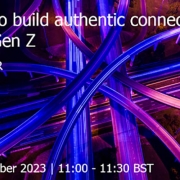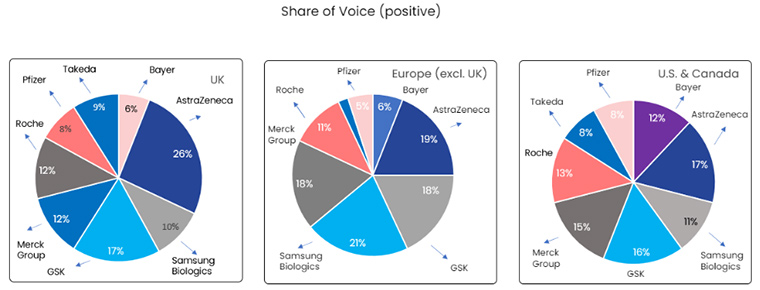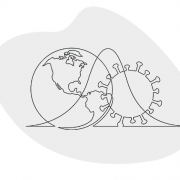Regulated Industries: How to use media analysis to remedy PR limitations
Across many regulated sectors, such as alcohol and tobacco, traditional PR strategies don’t always align with industrial policies, social stigmas, etc. Media analysis is a highly valuable resource when facing these limitations, can provide a clear insight into the conversation around your product or service. You can also use this data to see which campaigns and strategies are (or aren’t) working for you and your competitors — allowing for more informed and confident strategic decisions.
1. Understanding the controversies
The first step is understanding any possible social sensitivities associated with your product, i.e. health risks. Media analysis around this can reveal any pre-existing media discussion around your organisation and the topic itself, as well as any relative competitor campaigns. Using this data, you can tailor your messaging in a way that supports PR objectives and fosters trust with target audiences, with lower reputational risks.
The Body Shop’s 1997 Ruby Campaign
Paving the way for bolder campaigns within the beauty industry was The Body Shop’s ‘Ruby’, which launched in 1997 as an attempt to tackle body-shaming issues for women. The campaign, which challenged negative stereotypes, is considered a landmark in a long history of activism for the beauty brand and has continued to be an intermittent topic in the press for decades. Over the years the brand has received wide-spread criticism when it was bought out by L’oreal, Natura and very recently Aurelias – but the long-standing positive reputation of its original founder, Anita Roddick, has remained an effective crisis line when the brand’s PR has taken a hit.
2. Re-evaluating your KPIs
Let’s say your limitation is that the product itself can’t be promoted in the press. How can KPIs be adjusted accordingly?
‘In healthcare, it’s really difficult because we can’t promote products,’ says Lisa Stone, Edelman’s director of client strategy. ‘I see that as an opportunity. We don’t have that as a KPI – there’s no “how many brand or product mentions did we get?”. Instead, we really get to focus on the cultural insight, the patient population we’re trying to track. When we talk about [PR] in healthcare, it’s actually about client need. What is the trigger we’re trying to solve? If you take the product out of it, it becomes a lot easier.’
KPI Analysis reports are the most efficient and digestible way to demonstrate how well you’re achieving these objectives and the overall performance of your activity. The Vuelio Insights team helps clients in regulated sectors to understand and evaluate which KPIs are realistic and achievable moving forward.
3. CSR – to invest or not to invest?
Investing in wider corporate social responsibility activities can be an effective way to promote your brand in a positive light and steer your brand away from controversy. This is where media analysis can be particularly helpful, as the media conversation around CSR in regulated industries is highly polarised; meaning the risks to your PR can go from 0 – 100 depending on the sector you fall into.
An example of this done well was the partnership between Iceland and Utilita, which achieved positive, high-volume national news in August last year for philanthropic efforts to tackle the cost of living crisis. On the other hand, CSR in sectors like tobacco come with unavoidable reputational risk, such as the Global Tobacco Interference Index, which makes annual headlines for monitoring which governments and countries are most ‘targeted’ by brands offering ‘CSR handouts’ in areas like charitable efforts and environmental protection.
4. Public to private Partnerships
On the note of Iceland and Utilita, establishing partnerships with government agencies, non-profit organisations, and public health institutions can — depending on the sector — enhance a regulated industry’s credibility. By actively participating in initiatives that promote things like responsible consumption or cause awareness, brands can showcase their commitment to societal well-being. These partnerships provide tangible evidence of the industry’s dedication to positive change, reinforcing the message that they are not just profit-driven entities with malicious intent.
5. Comparing corporate social strategies
Have you ever considered monitoring indirect competitors based on corporate social strategies alone? Quality media analysis is about more than comparing only apples-to-apples. Tracking brands similar to yours is just one side of the story – by analysing CSR across all regulated industries, you can get a clear-cut picture of which organisations do or don’t benefit from such efforts.
6. Managing misinformation
Establishing a reliable reputation is essential in an otherwise controversial sector. Managing misinformation is an essential housekeeping responsibility to keep this in check, across the news and social media. This can also feed into your crisis strategy, which expert insight reports should also play a key role in.
Vuelio’s crisis management reports are built by our team of experts, to provide you with quick turnaround on key themes, issues and sources of conversation both on and offline – as well as thorough horizon-scanning to alert and advise you of any emerging threats.
7. Preparing to be regulated
Is your sector not regulated yet, but it’s on the way? Buy Now Pay Later (BNPL) firms are a prominent example on the horizon.
Luke O’Mahony, Investec’s former Head of PR, advises to ‘act like you’re already regulated’. He adds that the worst thing a business can do is think ‘let’s make hay while the sun shines’, and to ‘strive for being a trusted company before the regulation comes in – that pays off in the long term’.
The 2022 Edelman’s Trust Barometer found that businesses are the institution most trusted by the public. This represents a huge opportunity – know your audience; conduct an analysis on who they are and what media they consume. Share thought leadership – ‘as a trusted sector, you can really take the lead’, adds Stone.
8. Incorporate political monitoring
In a regulated industry, keeping tabs on policy and other legal matters is an essential part of PR strategy. Media analysis reports can help you identify if the news is influencing policy, or if policy is influencing the news for your specific sector. Using this data, you can decipher the chicken from the egg when major changes occur in your industry, affirming whether you need to be proactive or reactive in response.
Using insights as a safety blanket
Navigating the challenges of PR in regulated industries requires a nuanced approach. By arming your strategy with social, media and political analysis, insights can act as an indicator of what is already working, as well as a layer of protection against any unforeseen risks.
Media analysis and crisis management are just a few of the six report types offered by our experts on the Vuelio Insights team. Want to learn more? Get in touch here.























